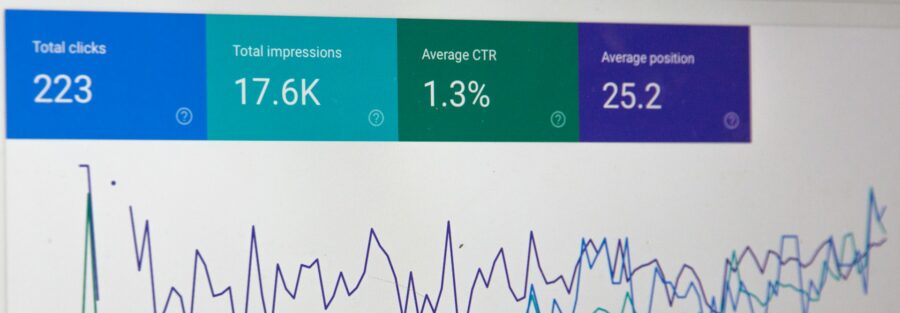In today’s fast-paced business landscape, data-driven decision-making is critical to staying competitive. Data provides valuable insights to drive strategy, optimise operations, and enhance customer experiences. Whether you’re a startup or an established company, effectively leveraging data can significantly improve your decision-making processes.
1. Understanding the Role of Data in Data-Driven Decision-Making
Before you can implement data-driven decision-making, it’s essential to understand the types of data available to your business:
- Descriptive Data: Insights into past performance, such as sales reports and website analytics.
- Predictive Data: Uses historical trends and AI tools to forecast future outcomes.
- Prescriptive Data: Provides actionable recommendations based on analysis to guide your decisions.
Tip: Start by identifying which type of data aligns with your current challenges, such as improving customer retention or forecasting sales trends.
2. Implementing a Data Collection Strategy for Data-Driven Decisions
A structured data collection strategy ensures that the data you gather is accurate, relevant, and actionable.
- Set Clear Objectives: Define the areas where data can improve decision-making, such as marketing, finance, or operations.
- Select the Right Tools: Use CRM software or analytics platforms to collect and organise data efficiently.
- Ensure Data Quality: Regularly validate and clean your data to maintain accuracy.
Example: An e-commerce business can track website visitor behaviour to optimise product recommendations and increase sales.
3. Leveraging Analytics Tools for Data-Driven Decision-Making
Transforming raw data into actionable insights requires investing in the right analytics tools. These tools can process large datasets, identify trends, and generate predictions.
- Business Intelligence Platforms: Tools like Power BI, Looker Studio and Tableau visualise metrics for easy interpretation.
- AI and Machine Learning Tools: Identify patterns and predict outcomes, particularly useful for financial planning and risk management.
- Customer Analytics Tools: Platforms like HubSpot and Google Analytics provide insights into customer behaviour for marketing strategies.
Tip: Choose tools that are scalable and align with your business needs. For insights on how data analytics is revolutionising industries, check out our blog on How Data Analytics Transforms Construction: Efficiency, Safety, and Profitability.
4. Making Real-Time Data a Key Part of Data-Driven Decision-Making
Real-time data is invaluable in a dynamic business environment, allowing you to make informed decisions quickly.
- Track KPIs in Real Time: Monitor metrics as they occur to adjust strategies proactively.
- React to Market Changes: Use real-time insights to respond to competitor actions or shifting customer preferences.
Example: A retail store can use real-time sales data during a promotional event to optimise stock levels and maximise profits.
5. Personalising Customer Experiences with Data
One of the most impactful ways to use data-driven decision-making is to personalise customer interactions, which can drive loyalty and revenue growth.
- Customer Segmentation: Use data to segment your audience by demographics or purchasing behaviours.
- Targeted Marketing Campaigns: Create tailored campaigns that resonate with specific customer groups.
- Personalised Recommendations: Analyse purchase history to suggest complementary products or services.
Example: A subscription service can use customer data to offer personalised renewal deals or upsell bundles based on individual usage patterns.
6. Breaking Down Silos for Collaborative Data-Driven Decision-Making
To fully benefit from data-driven decision-making, ensure data accessibility across all teams and departments.
- Centralise Data Management: Use a unified platform where marketing, sales, and operations teams can access relevant data.
- Collaborative Tools: Invest in software that allows teams to share insights and work on data-driven strategies together.
Example: A marketing team can refine its campaigns using insights shared by the sales and customer service departments.
7. Continuously Refining Your Data Strategy for Decision-Making
Data-driven decision-making is an ongoing process. Regularly reviewing and refining your data strategy ensures it evolves with your business.
- Monitor Key Metrics: Focus on the KPIs most relevant to your goals, such as customer acquisition costs or employee productivity.
- Adopt New Technologies: Stay updated on advancements in data analytics tools and technologies.
- Continuous Improvement: Use data insights to optimise processes and enhance performance across your organisation.
Example: A growing business might start with basic analytics tools and then scale up to advanced AI-driven solutions as it matures.
Final Thoughts
Leveraging data for better decision-making is no longer optional—it’s essential for long-term success. By implementing a structured data strategy, investing in the right tools, and fostering collaboration across teams, businesses can unlock new opportunities and mitigate risks.
Explore more about leveraging public datasets for business on Data.gov.au or consider using Yellowfin BI, an Australian-based analytics platform offering advanced data visualisation and business intelligence tools.
Whether you’re optimising marketing campaigns, streamlining operations, or enhancing customer experiences, data empowers you to make smarter, more confident decisions. Start harnessing the power of data today to build a resilient, future-ready business.



